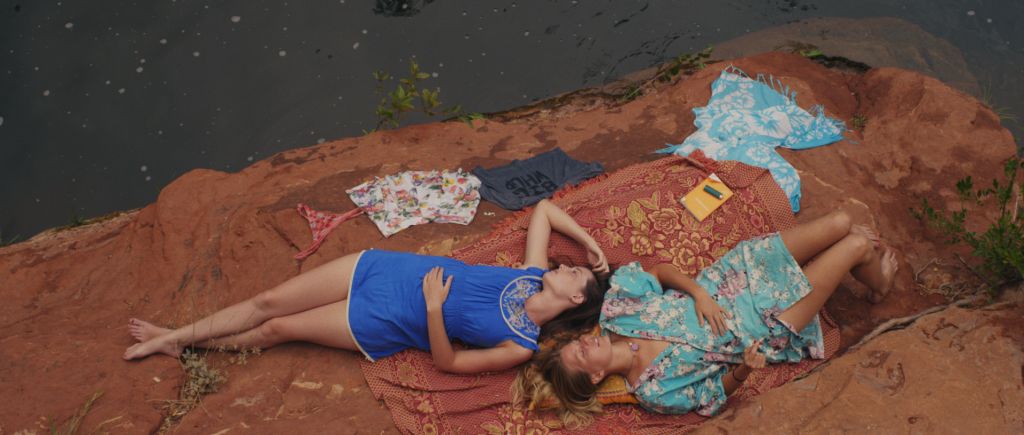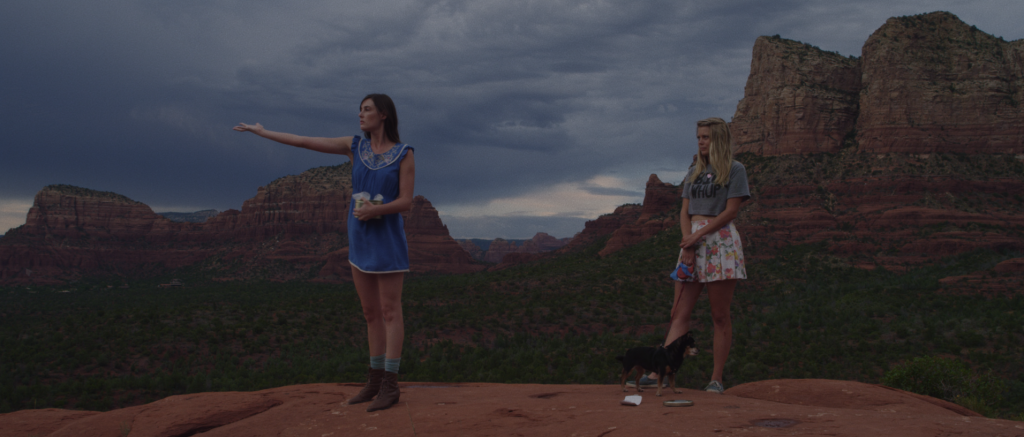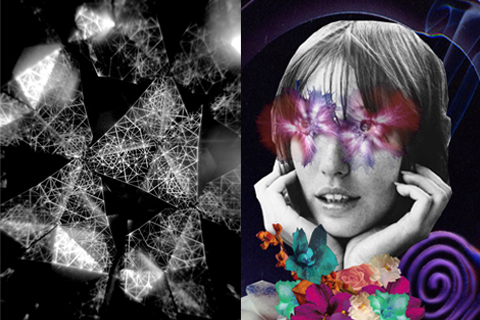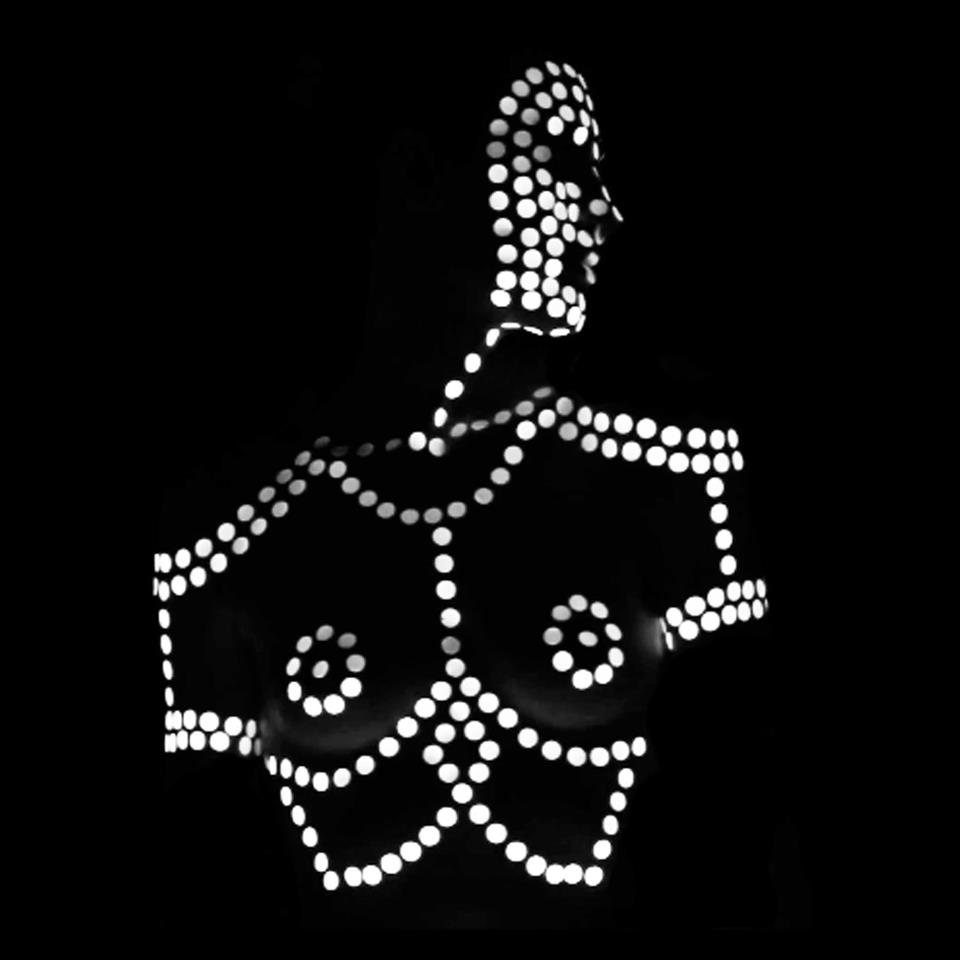Eye on Queer Cinema: Drew Denny on death, friendship, and her first feature film
Swoon caught up with Drew Denny, director of semi-autobiographical dark comedy The Most Fun I’ve Ever Had With My Pants On, to discuss independent filmmaking, new projects, friendship, grief, and her favorite films from Outfest this year. Interview by Kelly McKay
You’ve played many roles–writer, performance artist, musician, what was your first love in terms of artistic mediums, and what prompted you to shift your focus to film?
Writing was my first form of expression though I always secretly dreamed of performing. I loved film and studied it in school but became so disheartened by Hollywood that I figured I’d never be able to make a movie. So I joined a band, learned to play instruments and enjoyed the immediate pleasure of writing songs and performing them in front of people who responded right then and there. I was working as a teacher to pay rent and decided to go back to school myself, so I pursued a Master’s degree in Aesthetics and Politics at Cal Arts where I co-founded a collective that created installation artworks. I discovered a new context for performance, creating works in tandem with our installations and independently in New York, the Netherlands, and Mexico City. This work of course led to the performance about caring for my father… which became the film. Full circle I guess!
Tell me about the genesis for this film – I believe it started in a dream?
I was participating in a performance art festival in Lithuania when I dreamt that [co-star] Sarah Hagan and I drove across the desert making a film. I wrote her an email the next morning and cc’d her boyfriend/my friend/our film’s producer Clay and asked if they might be interested in going on this wild adventure. It was so abstract but the notion transfixed me. Luckily, they said yes.
Of course the backstory before all of this should include the parts about taking care of my dad as he passed away after being diagnosed with pancreatic cancer and given three weeks to live, then creating a performance artwork about that experience that combined video projection, pre-recorded score, live performed music, narrative, and audience participation. The film is an alchemical interaction between that performance, the dream, and all the incredible collaborative input from the Fun Pants family – Sarah Hagan, Clay Jeter, Will Basanta, Isaac Hagy, Steve Drypolcher, and Duncan Thum to name just the nuclear core.
I found it interesting that the film is obviously largely autobiographical, but you chose to frame it as a fiction. For example, you use your father’s real name in the film, but you play a character who is not exactly you but is going through your very real experience of traveling across the country scattering your father’s ashes. What appealed to you about this in-between place to carry out your story?
I love the inter-play between “fact” and fiction in our story. People often ask about that during Q&A’s and the best way I’ve found to describe it is by comparing it to that moment while tuning a guitar, when two notes are almost in tune with one another. The vibrations of two notes barely off pitch is at once uncomfortable and beautiful to me. My father plays himself, so to speak, though he of course was dead by the time we made the film. But there is video of him in the film, and I use his real ashes, his real name and many stories from his real life. I play another daughter he could have had. I wanted to pretend to be someone else, someone braver and louder and wilder – because I wanted to run around, to feel alive after living in a cancer hospital and watching my father die. I felt quiet. I felt timid. I felt awkward around my friends who, in turn, felt uncomfortable around my grief. So I made this character who laughs too much. I performed her until, of course, she’s forced to face the facts and learn to grieve as I was doing in my real life. The moment in White Sands is not acting. That’s not Andy. That’s me. But everything else is her or somebody in between, which was an incredibly therapeutic activity for me as it allowed me a space to consider my grief, to talk about it as I experienced it, and to play… which is quite a gift in a time of such sadness.
What do you think your father would make of the film?
I think my dad would like the film. He always wanted to be in a movie.
The cinematography is absolutely stunning! Who is responsible for it?
Will Basanta is our cinematographer, and he is one of the most talented people I know. Clay Jeter, our producer, worked with Will many times in the past. We had a cast and crew of six on this shoot, so every single person fulfilled at least two roles and the film could never look like it does without the team effort of Will, Clay and our AC Matt Chavez.
Did you set out with a finished script or did the project evolve organically in the shooting process? How involved was the rest of your team in shaping the story?
I wrote the script for Sarah and myself to perform, and I finished it literally the night before we set out to shoot. The script was 65 pages when we started shooting and the movie is 95 minutes long. So most of the film is performed as written but there are several improvised scenes and a few times when new scenes were invented because we stumbled upon a location we simply couldn’t resist.
You made this film in less than a year with a very limited budget and it’s a quite impressively polished piece. How did you pull that off? Did you finance it all out of pocket?
My good friend and collaborator Steve Drypolcher is the Executive Producer of the film, and we did a lot of bartering, borrowing, and calling in favors. Our AC owned a Red, and our producer owned an Aaton. I called every Park Ranger in the Southwest to get permission to shoot in public spaces for free or very little. Steve coordinated all visual post-production at his studio Bonnie Brae. We ate at gas stations and slept four to a room in Motel 6, so we were able to keep costs very low. The film looks professional because of the people who made it. Now I just have to raise a real budget for my second film, so I can actually pay them what they’re worth!
You’ve focused your energies for the past year or so largely on taking the film on the road. Has it been frustrating to put aside your other projects to focus on this?
I am always working on several projects at once. While touring with the film, I’ve been writing two narrative features and developing two doc projects. I worked on a sailboat in the Arctic for a month last fall, and that project is taking me to the Maldives in September. I created performance artworks for galleries in Brooklyn and a Museum in Massacheusetts. I toured with my old band from LA to Seattle and then from LA to South by Southwest. Now I’m starting a new band and trying to get my next film off the ground while preparing to act in a feature by another female writer/director in Nova Scotia… So I didn’t really put much aside besides sleep and having a home.
The film’s treatment of queerness reminded me of a few of my favorite films–High Art and The Bitter Tears of Petra Von Kant–in its depiction of a lesbian who is ultimately rejected by the (straight) object of their desire. Why the focus on rejection? What’s wrong with happy endings? The films I mentioned portray the lesbian character as unstable–an addict/alchoholic, and your Andy character is obviously a little crazy. Do you think this theme of the sad, troubled lesbian could be viewed a response to a sort of internalized homophobia experienced by queer women?
The film doesn’t focus on rejection. The protagonist is queer but this film isn’t about that. It’s not about coming out. It’s not about homophobia – from within or without. This is a film about a woman grieving the loss of her father and reconnecting with a long lost friend. We do weird things when we’re grieving, including – perhaps – inadvisably hitting on our best friends. Andy is unstable because she’s in pain. She becomes more stable by confronting that grief after she has been left alone.
Presently, I’m not interested in representing homophobia but I’m also not interested in making propaganda. I’m not going to put myself or any other queer person on a pedestal. My next film is a romance, but this film was not about romance – it was never meant to be. In my real experience of grieving my father, romance is not what saved me – that would be the Hollywood take. Friendship saved me. Platonic friendship, to be exact. Sex certainly helped! But it was friendship that got me through it – friendship is the most fun I’ve ever had with my pants on!
Though this film is not about rejection, it is about frustration. Watching someone die and not being able to do anything to stop it is an overwhelmingly frustrating experience. In this film, neither girl gets what she wants. Andy is let down by the person she was traveling towards the entire film, her mother. Liv’s audition does not at all go how she imagined. Together, they take their fate back into their own hands and celebrate life in the face of frustration. That’s what friends do! They stand up for each other, cheer each other up and remind each other that, though we don’t always get what we want, we have each other.
Why did you choose to end the film the way you did–leaving us with more questions than answers?
Again, that’s how I felt in real life — I didn’t want to construct something that tied up a neat little bow in the end just like I wasn’t interested in fabricating a perfect little love to solve the problem of grief. The friends re-unite only to part again but that moment of rebellion and ecstasy in the casting office assures us their friendship is built to last. The game they play at the end– I wanted to leave people thinking. It’s a reference to the film itself, though I’d rather not explain too much. I like having conversations around that scene as many people interpret it just how I hoped and many have far more fascinating analyses than any I could have presupposed.
What about the film, if anything, would you do differently given the opportunity?
Oh, I’ve gone through so many phases of embarrassment and self-judgment about this film… At this point, I’m just happy we did it. It was an idea, a desire, and now it’s real. Some people hate it but just as many people love it. It makes people laugh and cry, and that is truly a gift. It was my tribute to my dad and to friendship, and it came from the heart. From a group of hearts! So I like it just how it is. Warts and all.
Any advice to the first time filmmaker?
DO IT. Don’t wait for money, do it by hand. And don’t be afraid to get vulnerable.
What are you working on next?
Right now I’m writing two narrative films – one is a very dark drama to be shot in New York, directed by Joseph Castelo. The other is very bright, ecstatic and romantic – a collaboration with an animator (Caitlin Craggs), a radio producer (RS James), and a principal dancer from the New York City Ballet (Adrian Danchig-Waring).
I’m also working on two doc projects – one is about climate change, shot in Arctic Greenland and the Maldives with artist Zaria Forman– and the other will follow a trans artist as they give “Butch Cuts” to butch-identified women and trans folks in rural areas all across the country.
I’m also working with a new band called HIPS which features Christina Gaillard (who was in BONBON with me) and Natalia Rogovin (Social Studies). We are making sexy jams to dance and love to, and I am just so super excited about that project…
Outfest was packed with promising films, any favorites you can recommend?
Favorite films from Outfest: Who’s Afraid of Vagina Wolf, After Tiller, God Loves Uganda, She Gone Rogue, Test, In Bloom, Big Joy and Beauty in Truth: The Alice Walker Story. Follow all these amazing films!! And there are a few I didn’t get to see which I will be chasing down on the festival circuit including Gore Vidal, Bridgegroom, Pit Stop, Born This Way, It’s All So Quiet and In The Name Of… Support queer cinema! Support independent cinema! Support films made by female directors!
For more on the film: http://www.funpantsmovie.com/









